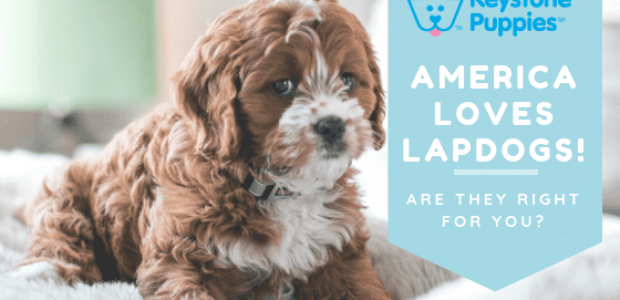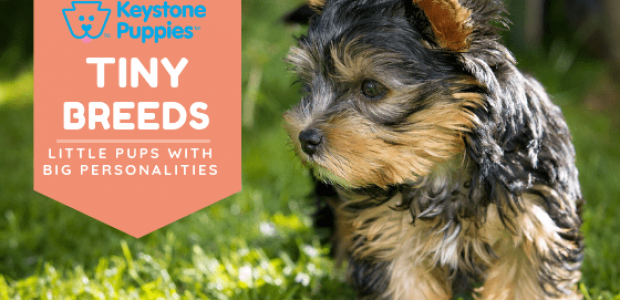Are Spirited Terriers Right for You?
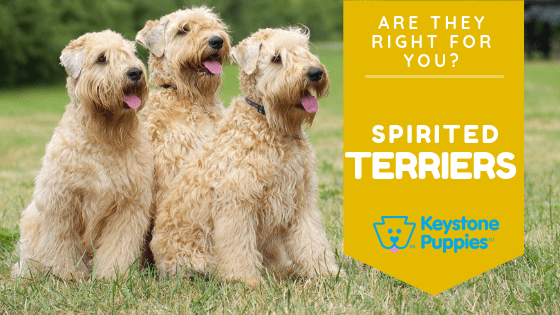
Are They Right for You?
The Terrier group is a relatively recent addition to the dog world. Like many breed groups, this set of pups was bred for a specific set of tasks. In this case, Terriers were bred to control pests and vermin. All kinds of Terriers start appearing in the British Isles during the eighteenth century. Many Terriers are named after the areas on the British Isles where they were originally bred, such as Yorkshire, West Highlands, and Airedale.
The breeds in the Terrier group were selected for energy, ability to dig, and for their enthusiasm for chasing and killing mice, rats, moles, and even badgers and foxes. In fact, even their name, derived from the Latin root “terra,” or earth, hints at their special ability to “go to ground.”
Terriers were originally bred as farm dogs. These pups spent time in family homes, but also lived and worked in barns, mills, mines, outdoors, and even on riverbanks. They like to be outdoors, and many have thick coats appropriate to the chilly, wet British climate. Their sizes range from the tiny Yorkshire Terrier to the larger Airedale and Soft Coated Wheaten Terriers.
While each breed is a little different, Terriers as a group have a reputation for being high-energy and stubborn, which means owners must be persistent and determined in order to develop a well-trained pup. Some Terrier breeds also have unusual coats which have special grooming needs. See our blog on Coat Care for more details.
In the late nineteenth-century new Terrier breeds were developed that were not a part of the original breed group. The Pit Bull Terrier resulted from breeding Bulldogs and Terriers. The Boston Terrier is another Bulldog/Terrier hybrid. These “second-generation” Terriers retain much of the spirit and feistiness of the group and have captured the hearts of many dog owners.
Here’s an overview of some of the most popular Terriers in the United States.
Airedale Terrier
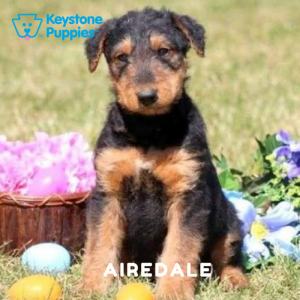
The Airedale Terrier is the largest Terrier and was bred to control pests in the Aire River Valley in Yorkshire, England. Airedales specialized in digging into river banks to find the burrows of pests such as rats, martins, otters, and foxes.
Airedales have also been used as sporting dogs. This breed is friendly and good with kids. Unlike many breeds in the Terrier group, Airedales are relatively easy to train, but they need a lot of room to roam or they can get restless or destructive. Their coat needs special care, including coat stripping, or their fur may begin to appear mangy or unkempt.
Miniature Schnauzer
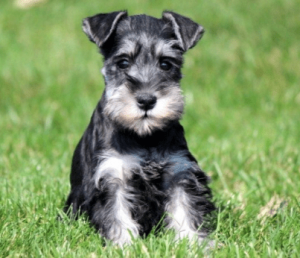
While the larger Schnauzer breed goes back to the 1400’s, the Mini Schnauzer was first bred in the nineteenth-century. These Germanic pups are one of the few Terriers to originate off the British Isles.
Like most Terriers, these energetic dogs need lots of vigorous outdoor exercise, or they may engage in destructive behavior. While Mini Schnauzers are spirited and playful, they’re also stubborn and need a knowledgeable handler to train them. Finally, this lovable puppy’s coat needs a lot of care, including coat stripping.
Cairn Terrier
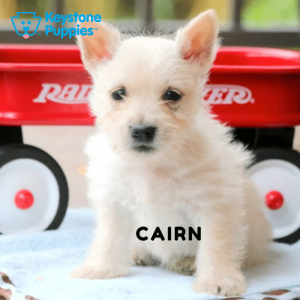
The spunky, little Cairn Terrier may have been bred in Scotland, but it will always be best known as the tiny dog from Kansas in The Wizard of Oz. Like most Terriers, Cairns were bred to control rat populations, as well as to serve as pest control for foxes, rabbits and even badgers.
This intelligent pup is courageous and outgoing. They are good with kids, and, like most Terriers, these puppies need lots of walks and exercise to keep them calm and centered. They can be stubborn, so thorough training will require determination.
Fox Terrier – Toy
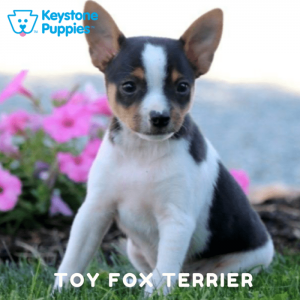
The small Toy Fox Terriers were used on farms to control pests and vermin, but because of their size and speed, they also became popular hunting dogs for small game such as rabbit. This Terrier is naturally obedient and easy to train. Their obliging nature, combined with bright, expressive faces also made them a popular choice for circuses.
Today their size and speed make them a natural candidate for agility competitions. The Toy Fox Terrier is a friendly pup that does well with kids and strangers. They are easy to groom. However, like most Terriers, they are energetic and need lots of outdoor exercises, or they can get skittish and bark excessively.
Jack Russell Terrier

The Jack Russell Terrier was named after the man who developed the breed. The Reverend John “Jack” Russell was a nineteenth-century English parson who also loved dogs and fox hunting. In fact, the Jack Russell Terrier is sometimes called the Parson Russell Terrier.
These pups have short coats that are easy to groom. They are exceptionally energetic and like to run in full-speed bursts, so large yards or frequent visits to a dog run are needed. Without plenty of exercise, they can engage in destructive, boredom-based behaviors. They are eager to please and are easier to train than many Terrier breeds.
Soft Coated Wheaten Terrier
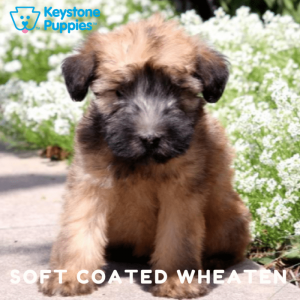
Soft Coated Wheaten Terriers are the native dogs of Ireland. The farmers of Claire, Cork, Kerry, Limerick, Tipperary, and Waterford counties used these Terriers to control vermin but also used them as a family guard dog, to work cattle, and to hunt. While the Wheaten has been in Ireland for centuries, this pup is a recent immigrant to the United States, with the first dogs arriving in the 1940s.
Wheatens are friendly, like children, and can get lonely if left alone for long. While they need daily exercise, they are not as high-energy as many other Terrier breeds. Their shaggy coat needs regular grooming. Like many Terriers, they are stubborn, so training requires determination.
West Highland Terrier
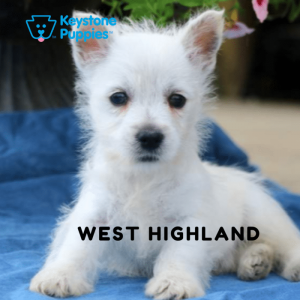
West Highland Terrier lore reports that after a reddish dog was mistakenly shot for a fox, the breed was developed to produce only white dogs so that they be easily spotted among vermin or game.
This confident, spirited breed is a highly social puppy and a natural entertainer. They are also known for a signature cock of the head, that often gives them a bemused or quizzical look. These small pups are good choices for apartments, but they need daily walks. They are friendly and like kids. They need regular grooming to maintain the gloss and color of their pristine white coats. Unlike many Terriers, the Westie is eager to please and relatively easy to train.
Yorkshire Terrier
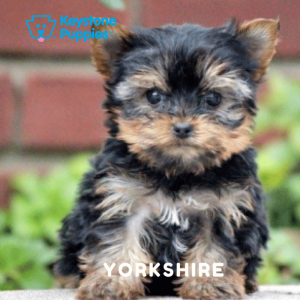 The silky Yorkshire Terrier was known by a few different names before Yorkshire claimed them as their own in 1874. Yorkies were bred small to fit into nooks and cracks in mines and mill buildings in 19th-century Britain. Hunters liked to carry the small Yorkies in their pockets to help them hunt down rabbits, foxes, and even badgers. Since the small pups needed to face off with larger animals, courage became an important trait in the breed. That courage makes them an excellent watchdog in the modern world (learn more in our blog, Surprising Watchdogs. )
The silky Yorkshire Terrier was known by a few different names before Yorkshire claimed them as their own in 1874. Yorkies were bred small to fit into nooks and cracks in mines and mill buildings in 19th-century Britain. Hunters liked to carry the small Yorkies in their pockets to help them hunt down rabbits, foxes, and even badgers. Since the small pups needed to face off with larger animals, courage became an important trait in the breed. That courage makes them an excellent watchdog in the modern world (learn more in our blog, Surprising Watchdogs. )
Feisty Yorkies are loving and loyal, but wary of strangers. They can be aggressive with larger dogs and other animals. Their unusual, silky coat needs regular grooming. These high-energy dogs love to play and need daily walks. Like many Terriers, they have a stubborn streak that makes training more challenging.
Second-Generation Terriers
These “second-generation” Terriers were bred to retain the Terriers’ feisty disposition and combine it with attributes from other breeds. While these pups are called Terriers, they differ from the core group in appearance and temperament
Boston Terriers
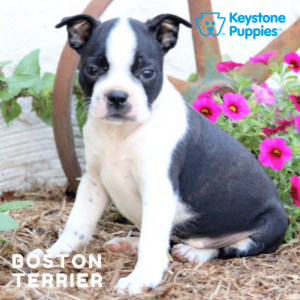
The Boston Terrier has a gentle, spritely personality. This pup was developed as a result of intensive selective breeding between the White English Terrier and the English Bulldog. As its name implies, it is an American breed and was added to the breed list of the American Kennel Club as a non-sporting breed in 1893.
Boston Terriers love children and are devoted pets. They are loyal and wary of strangers, making them a good watchdog breed. Like most Terriers, they can be stubborn and require a knowledgeable trainer.
The American Pit Bull Terrier
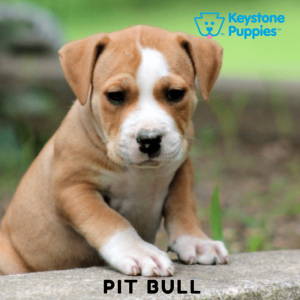
The Pit Bull Terrier was originally developed from Bulldogs and Terriers to fight other animals and dogs. This history has earned the breed a reputation as aggressive dogs and made Pit Bulls a popular choice as a watchdog.
However, this dog’s loyalty and love for people, especially children, make this breed a great choice as a companion pup. The Pit Bull Terrier is generally healthy and easy to groom. They are intelligent puppies that are easy to train, but that also like to chew.
***
While breed standards are a good guideline, each dog is an individual. Your dog’s personality and abilities may deviate from the breed standard. If you want to research over 200 breeds of dogs, start here. If you know what kind of pup you want, start looking for your dream dog here.





